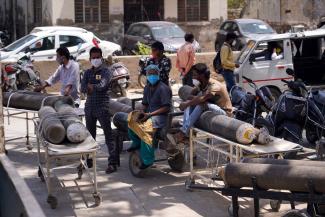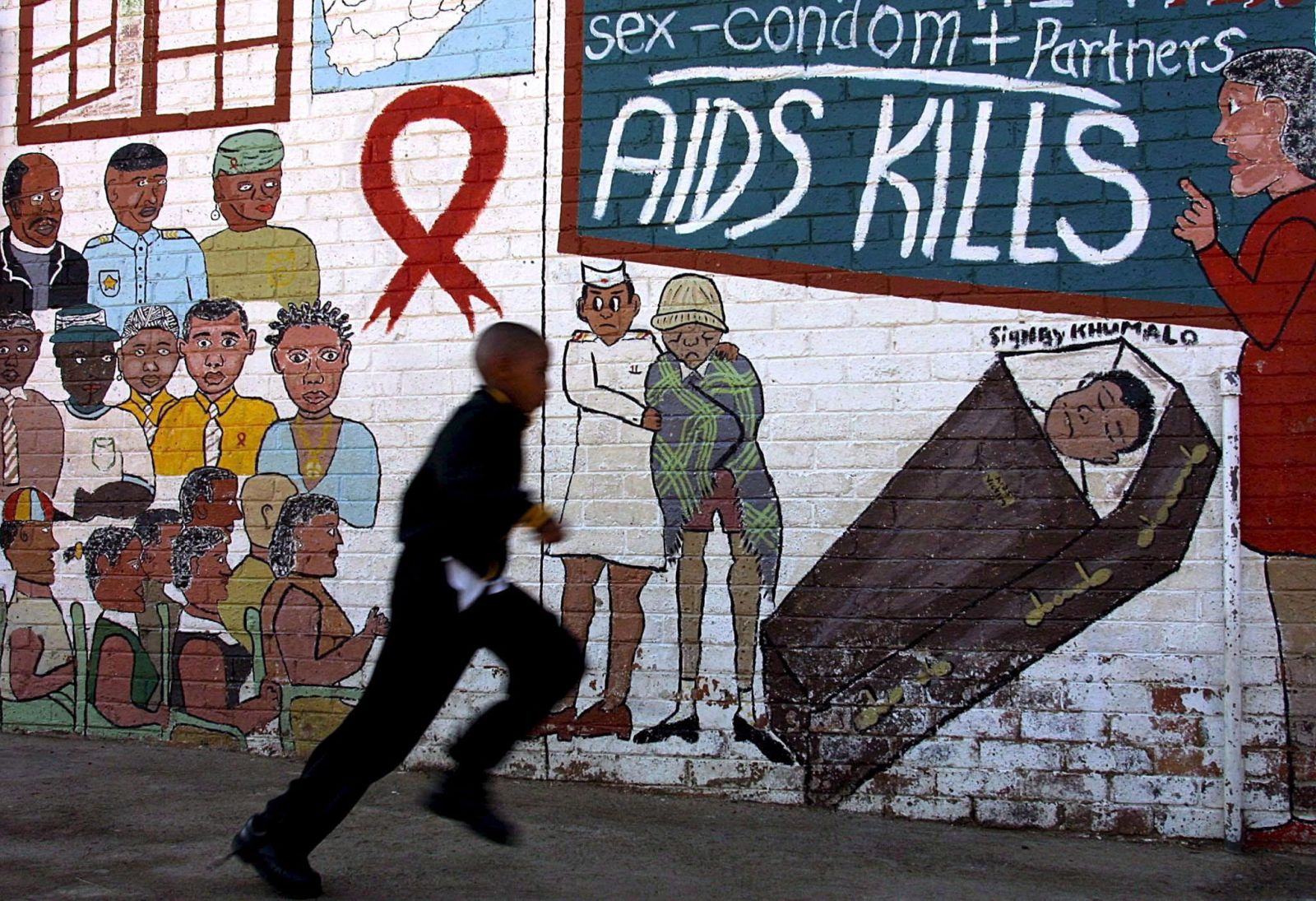Mass suffering
India’s disastrous second Covid-19 wave

April was marked by Covid carnage, mass suffering of patients and a dramatic shortage of hospital beds, medication and oxygen cylinders. The second wave is much worse than the first. In early 2021, hospitals actually closed down Covid-19 facilities. There were very few cases. Some officials even said India had acquired herd immunity. Prime Minister Narendra Modi claimed India was inspiring the world. Only about 150,000 Indians died of the disease last year – tuberculosis alone kills three times more every year.
That was then. By 1 May, the daily tally of new Covid-19 cases surpassed 400,000. Some 4,000 deaths were being recorded daily. Experts agree, however, that the official statistics undercount and hide the true impact. According to the Gujarat State health bulletin, there were 78 deaths on 16 April, but local reporters counted 689 cremations and funerals on the same day. Newspapers carry many stories of this kind.
The virus spares no one, killing even children. Within a matter of days or even hours, families have lost several members. Burial grounds have no space; crematoriums cannot keep up with the demand. Public parks are being used as cremation grounds, and corpses have been found floating in rivers.
In 2020, infection seemed limited to the cities, but now it is ravaging villages too. Health infrastructure is weak in India’s rural areas, and so are official statistics. What we know is that people are suffering symptoms typical of Covid-19 – and many do not survive. Typically, no one does a scientific diagnosis. It has been reported, for example, that in Tilampur, a village in the state of Uttar Pradesh, most households have at least one family member suffering from fever or cough. Apparently, villagers speak of “mysterious deaths”.
What has caused the second wave is not clear. Some blame it on new variants. Genomic analysis has shown that there is a distinctively Indian “double mutant”. The World Health Organization considers it worrisome. It is indeed prevalent in some parts of the country, though not in Delhi, where the situation is equally desperate.
Moreover, many people are critical of the central government. It did not insist on social distancing and Covid-adequate behaviour in recent weeks. Even worse, it allowed mass gatherings during regional election campaigns (in which the BJP, Modi’s Hindu-supremacist party, fared worse than it hoped) as well as for the Kumbh Mela, a Hindu festivity attended by hundreds of thousands of worshipers.
Arundhati Roy, the author of bestselling novels, has called on Modi to step down because he did nothing to avert this catastrophe. The government, of course, wants to be seen as sensitive, bold, quick, responsive, hardworking et cetera. It is doing what it can to “manage perceptions” in order to “create a positive image”. Among other things, the Modi government has told social media platforms to block information that pertains to Covid suffering. In one BJP-run state a police report was even filed against a young man who sent out tweets to find an oxygen cylinder for his ailing father.
The judiciary is not buying the propaganda, however. The courts are trying to force state agencies to rise to the pandemic challenges. The Supreme Court has even established a panel to draft a better response.
India is a proud emerging-market nation and has tried to walk towards the goal of self-reliance since its independence. This is for the first time since the Indian Ocean Tsunami in 2004 that the country has had to accept large-scale international support. Over 40 countries have promised to send medical supplies. The first batch of assistance, including relief goods from Germany and the USA, have arrived in India. Allocation, however, did not begin until a media organisation began asking questions.
Experts warn that a third wave of coronavirus looks inevitable. In early May, a mere 1.7 % of the population had been fully vaccinated, but the largest pharma producer ran out of doses. According to a recent survey, 61 % of Indians are “feeling angry, upset, depressed or worried”.
Roli Mahajan is a freelance journalist based in Lucknow.
roli.mahajan@gmail.com













